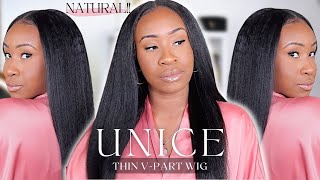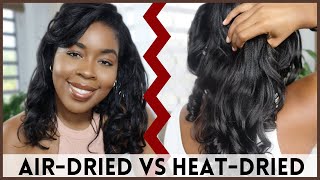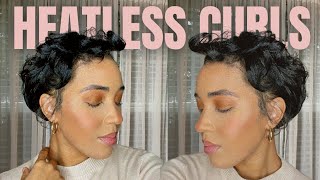What Relaxer Stretching Is And Why It Is Important In Retaining Length

There was a time where I would run for the relaxer at the first sign of new growth. To me roots were synonymous with touch up (or the devil, whichever fits). I didn’t want to see them. I didn’t want to deal with them.
So I religiously scheduled a hair appointment with an actual stylist (or sometimes with my mom) every six weeks to make sure that I was “taking care of my hair”. Of course, along with a lot of other false hair care beliefs I carried, I just knew that your hair always had to be relaxed on time.
And of course this was very unhealthy for my hair which goes to prove that ignorance is truly bliss sometimes.
It is amazing what the Internet can do because with lots and lots of research on hair care blogs and websites I found that waiting longer in between touch ups, or “relaxer stretching”, was in fact one of the best things that you can do for your relaxed hair.
Although it takes more patience and TLC for your hair, there are ample benefits to allowing more time to elapse in between relaxers. The average wait time in between touch ups for most women who relax their hair today is six to eight weeks.
At least that’s what I was told by countless stylists before I decided to take my hair care into my own hands. With the proper care, however, waiting even longer than that can really be a godsend to your tresses.
Knowing the damage I was causing to my hair by relaxing too frequently made me cringe. What’s more, I began self-relaxing when I started college because I really could not afford to be in the salon every six weeks.
That meant that every touch up was essentially practice until I learned how to do it myself (with skill). All those factors compounded put my hair on the expressway to disaster. Luckily, I got off at the right exit and turned it around.
Relaxer Run Off
One of the first reasons I was given for stretching is the threat of relaxer run off. Despite all of the effort we put into only applying relaxer to our roots it still gets on all of our hair while rinsing.
Depending on how quickly you apply your neutralizing shampoo and in spite of your efforts to mitigate the damage by applying oils* or conditioner to your previously relaxed hair, all your hair begins to process again to some degree while rinsing. Obviously this is something that cannot be avoided; you have to wash the relaxer out don’t you?
However, stretching means that you relax less often and therefore expose your hair to relaxer run off fewer times per year as well. Honestly, that was all I needed to hear to give stretching a try. Then, after a little more research I saw that other great things could happen too. So, I went on my first stretch.
 Managing Two Textures
Managing Two Textures
Benefits aside, it was a nightmare. I was still fully relaxed at that point, but I was not prepared for just how much work managing two textures would take. Plus I had gotten used to wearing straight styles all of the time and protective styling just wasn’t a thing for me.
I quickly found that what I was doing would not work for long term stretching. In fact, the key to successful stretching is the exact opposite so you should opt for more textured styles.
Now that I stretch quite regularly I’ve found that my favorite benefit is the increased length retention I’ve come to see as a result.
Other ways that ladies have found to manage the two textures while stretching is roller setting, braid outs, perm rod sets or any other style that help you blend the two textures.
Another good idea is to air dry your hair with a scarf to flatten your edges, this gives you a neat look so you can continue to rock sleek buns, ponytails or half up half down styles deep into your stretch.
Why Stretches Work For Length Retention
If done correctly, length retention is definitely one of the great benefits of stretching. Why? Well, if you look closely at the way you treat your hair during stretches you will find your answer.
Your hair is more susceptible to breakage during a stretch because among other things you are dealing with two very different textures. These two textures need different things and are most sensitive in the spot where they meet, the line of demarcation.
To combat this a lot of women turn to more deep conditioning*, more moisturizing and more protective styling during their stretches. These things are not only useful during a stretch, but also form the basics of healthy hair care. And as we know, healthy hair leads to longer hair.
Thicker Hair
However, what’s longer hair without its partner in crime: thickness? Relaxer stretches also make for thicker hair but for more for a mechanical reason.
Waiting longer means more new growth to deal with so when you (or your stylist) is applying your relaxer you can apply it just to your roots as the difference in textures will be more visible.
This of course prevents overlapping (treating already processed hair). Overlapping is a contributing factor to why relaxed hair becomes weaker and thinner over time aka; the main culprit behind breakage.
The most important thing to remember about stretching your relaxers is to listen to your hair. For some people a stretch means going 10 weeks instead of 8. Others can go 24 weeks and only relax twice a year.
Remember that you want to maximize the benefits of your stretches without causing your hair undue damage so increase the time between touch ups by a week or two each time until you find your perfect number of week.
Some signs that you have gone too far are uncontrollable shedding and/or breakage. Having a setback is the exact opposite of what stretching is meant to do and only you know your own limits so don’t overdo it.




